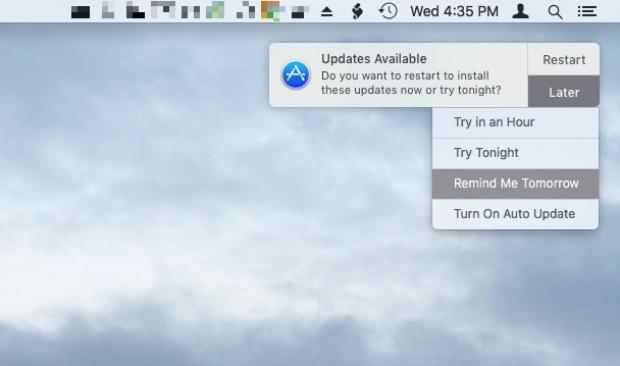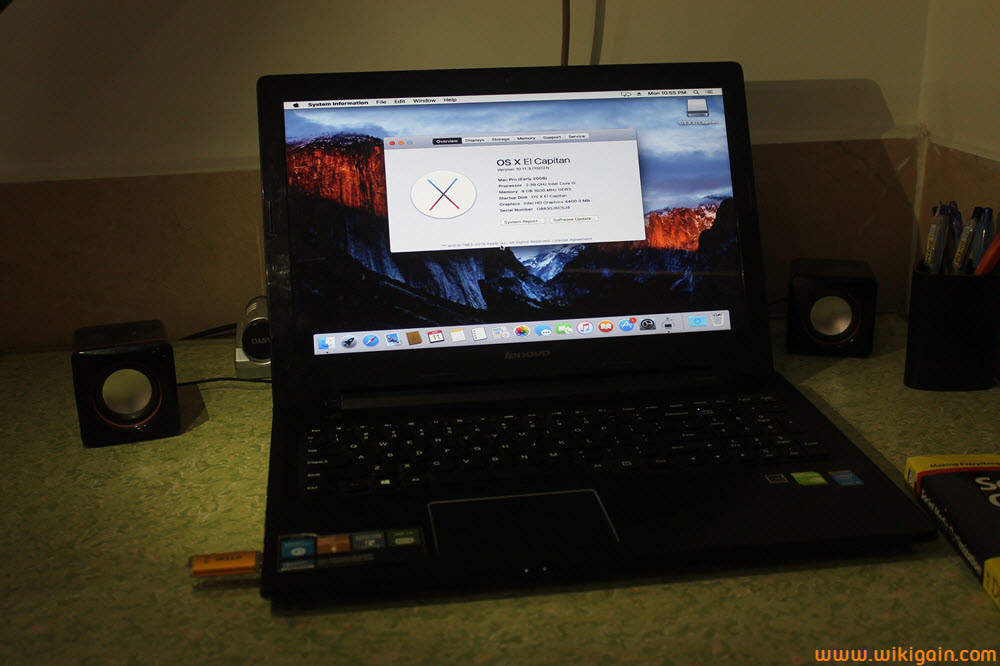These advanced steps are primarily for system administrators and others who are familiar with the command line. You don't need a bootable installer to upgrade macOS or reinstall macOS, but it can be useful when you want to install on multiple computers without downloading the installer each time.
- Os X El Capitan 10.11.6 Install From Usb
- Install Mac Os X El Capitan From Usb
- Install Os X El Capitan From Flash Drive
If Your Mac hard drives break down and stop working. If you are upgrading or replacing a Mac hard drive and you don't have an operating system, this video wi. Oct 19, 2015 All you need to perform the installation is a spare 8GB or larger USB thumb drive, an external drive to back up all your data to (if you have any), and a copy of OS X 10.11 El Capitan. OS X 10.11 El Capitan can be downloaded from the Mac App Store. Mar 01, 2016 This step-by-step procedure will teach you how to create a bootable USB drive installer for Mac OS X El Capitan.This method will also work for the other iterations of OS X (including the Yosemite, Mavericks, and Mountain Lion updates). In this version of the Mac operating system, the Apple Inc. Has focused on the performance, stability, and security of the computer. Anyone who is interested can download it on the Mac PC. Mac Os X El Capitan 10.11.6 Usb Install Image; Create Mac Os X El Capitan Install Usb From Windows; How to download El Capitan Installer? El Capitan Installer.

What you need to create a bootable installer
- A USB flash drive or other secondary volume formatted as Mac OS Extended, with at least 14GB of available storage
- A downloaded installer for macOS Big Sur, Catalina, Mojave, High Sierra, or El Capitan
Download macOS
- Download: macOS Big Sur, macOS Catalina, macOS Mojave, or macOS High Sierra
These download to your Applications folder as an app named Install macOS [version name]. If the installer opens after downloading, quit it without continuing installation. To get the correct installer, download from a Mac that is using macOS Sierra 10.12.5 or later, or El Capitan 10.11.6. Enterprise administrators, please download from Apple, not a locally hosted software-update server. - Download: OS X El Capitan
This downloads as a disk image named InstallMacOSX.dmg. On a Mac that is compatible with El Capitan, open the disk image and run the installer within, named InstallMacOSX.pkg. It installs an app named Install OS X El Capitan into your Applications folder. You will create the bootable installer from this app, not from the disk image or .pkg installer.
Use the 'createinstallmedia' command in Terminal
- Connect the USB flash drive or other volume that you're using for the bootable installer.
- Open Terminal, which is in the Utilities folder of your Applications folder.
- Type or paste one of the following commands in Terminal. These assume that the installer is in your Applications folder, and MyVolume is the name of the USB flash drive or other volume you're using. If it has a different name, replace
MyVolumein these commands with the name of your volume.
Big Sur:*
Catalina:*
Mojave:*
High Sierra:*
El Capitan:
* If your Mac is using macOS Sierra or earlier, include the --applicationpath argument and installer path, similar to the way this is done in the command for El Capitan.

After typing the command:
- Press Return to enter the command.
- When prompted, type your administrator password and press Return again. Terminal doesn't show any characters as you type your password.
- When prompted, type
Yto confirm that you want to erase the volume, then press Return. Terminal shows the progress as the volume is erased. - After the volume is erased, you may see an alert that Terminal would like to access files on a removable volume. Click OK to allow the copy to proceed.
- When Terminal says that it's done, the volume will have the same name as the installer you downloaded, such as Install macOS Big Sur. You can now quit Terminal and eject the volume.
Use the bootable installer
Determine whether you're using a Mac with Apple silicon, then follow the appropriate steps:
Apple silicon
- Plug the bootable installer into a Mac that is connected to the internet and compatible with the version of macOS you're installing.
- Turn on your Mac and continue to hold the power button until you see the startup options window, which shows your bootable volumes.
- Select the volume containing the bootable installer, then click Continue.
- When the macOS installer opens, follow the onscreen instructions.
Intel processor
Os X El Capitan 10.11.6 Install From Usb
- Plug the bootable installer into a Mac that is connected to the internet and compatible with the version of macOS you're installing.
- Press and hold the Option (Alt) ⌥ key immediately after turning on or restarting your Mac.
- Release the Option key when you see a dark screen showing your bootable volumes.
- Select the volume containing the bootable installer. Then click the up arrow or press Return.
If you can't start up from the bootable installer, make sure that the External Boot setting in Startup Security Utility is set to allow booting from external media. - Choose your language, if prompted.
- Select Install macOS (or Install OS X) from the Utilities window, then click Continue and follow the onscreen instructions.
Learn more
A bootable installer doesn't download macOS from the internet, but it does require an internet connection to get firmware and other information specific to the Mac model.
For information about the createinstallmedia command and the arguments you can use with it, make sure that the macOS installer is in your Applications folder, then enter the appropriate path in Terminal:
- Download El Capitan installation from the App store. It might complain that you already have it installed but download it anyway. It will be downloaded to /Applications and be named Install OS X El Capitan.app
- Create a bootable image from the El Capitan installer on a USB stick larger than 6GB. In a terminal run:
Install Mac Os X El Capitan From Usb
where MyVolume is the name of your USB stick. Change this to match the name of your USB stick.
- Physically install SSD into the target laptop.
- Insert the El Capitan USB stick into the target laptop and power up. (This might take a while.)
- When the menu finally turns up, choose Disk Utility and format the SSD as Mac OS Extended (Journaled) with a unique name.
- Once complete, exit from Disk Utility and return the main menu.
- Choose to Install OS X on the formatted SSD.
- Follow the prompts until El Capitan is installed.
Here’s link to a video on how to physically install the SSD as well as run the software installation.
Install Os X El Capitan From Flash Drive
If you’d rather install Yosemite on the SSD then follow the How to Install Yosemite on a New SSD guide.